Unit 2 Probability
3.1 Basic Concepts of Probability and Counting
Basic Probability
Calculating the Probability of an Event
\(P(E)=\frac{\# \text { of Possible Successes}}{\text {Total } \# \text { of Possible Outcomes}}=\frac{n(E)}{n(S)}\)
- In a bag, you have
- 4 blue chips numbered 1, 2, 3, & 4
- 3 red chips numbered 1, 2, & 3
- 2 green chips numbered 1 & 2
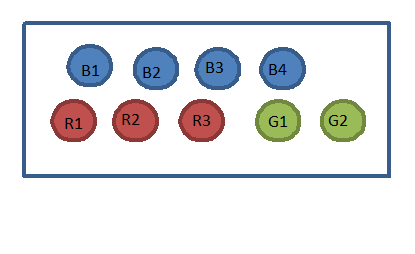
You randomly select one chip from the bag. Find:
Event Theoretical Probability Experimental Probability P(B) n(E)=n(Blue)=4
n(S)=n(Chips)=9\(\frac{4}{9}=.444=44.4 \%\)
P(R) \(\frac{3}{9}=.333=33.3 \%\)
P(G) \(\frac{2}{9}=.222=22.2 \%\)
P(4) \(\frac{1}{9}=.111=11.1 \%\)
P(3) \(\frac{2}{9}=.222=22.2 \%\)
P(\(\overline{B}\)) = P(not blue) \(\frac{5}{9}=.556=55.6 \%\)
P(\(\overline{R}\)) \(\frac{6}{9}=.667=66.7 \%\)
P(\(\overline{G}\)) \(\frac{7}{9}=.778=77.8 \%\)
P(number less than 5) \(\frac{9}{9}=1=100 \%\)
P(5) \(\frac{0}{9}=0=0 \%\)
- \(P(A)+P(\overline{A})=1\)
- \(P(A)=1-P(\overline{A})\)
- \(P(\overline{A})=1-P(A)\)
- You roll a fair 6-sided die
- List the Sample Space:
\((S)=\{1,2,3,4,5,6\}\) \(n(S)=6\) - What is the probability of:
- rolling an odd number greater than 1?
\(P(E)=\frac{n(E)}{n(S)}\)
Sample space: \(E=\{3,5\}\) \(n(E)=2\) \(P(E)=\frac26=\frac13\)
- not rolling an odd number greater than one?
This is a good example when to use the Rule of Complements. The problem above is the complement of this problem.
P(not rolling odd greater than 1) = 1 - P(rolling odd greater than 1) \(=1-\frac{2}{6}=\frac{4}{6}\)
\(E=\{1,2,4,6\} ; n(E)=4\)
- rolling a value greater than 6?
\(\frac{0}{6} ; E=\{ \}\) impossible - rolling a value between 1 and 6, inclusive?
\(\frac{6}{6} ; E\{1,2,3,4,5,6\} \) certain - rolling a value between 1 and 6?
\(E={2,3,4,5} \) so the probability is \(\frac{4}{6}=\frac23\)
- rolling an odd number greater than 1?
- List the Sample Space:
Complements Rule
What do you notice about P(\(B\)) and P(\(\overline{B}\))?
What do you notice about P(\(R\)) and P(\(\overline{R}\))?
Probability Rules for Complements
Some Special Probabilities
Impossible Event:
Certain Event:
Unusual Event:
Creating the List of Outcomes for a Large Sample Space
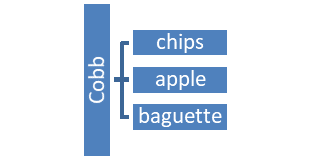
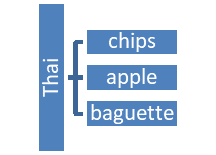
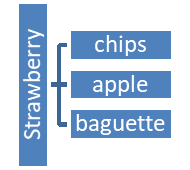
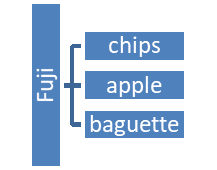
- How many possible outcomes do we have in our sample space?
\(n(S)=4 \times 3=12\) 4 salads, 3 sides - You decide to add a drink. Your choices are: Coke, Diet Coke, Sprite, Sweet Tea and UnSweet Tea. Now how many outcomes are in your sample space?
\(n(S)=4 \times 3 \times 5=60\) 4 salads, 3 sides, 5 drinks
Fundamental Counting Principle:
For a sequence of two events in which the first event can occur in m ways and the second event can occur in n ways, the events together can occur in m*n ways. This rule can be extended to any number of events occurring in sequence.
\(10 \times 5 \times 3=150\) outfits
\(35 \times 36 \times 36 \times 36 \times 5 \times 5=40824000\)
The TI calculator output will be \(2.45E-8\)
Fair Game Activity
She ALWAYS wins. It's not fair!Figure This! Two players each roll ordinary six-side die. Of the two numbers showing, the smaller is subtracted from the larger. If the difference is 0, 1, or 2, Player A gets 1 point. If the difference is between 3, 4, or 5, Player B gets 1 point. The game ends after 12 rolls. The player with the most points wins the game. Is this game fair?
Record the data below. Hint use tally marks to keep track of who wins each of the 12 rolls.
OUR DATA:
Numer of games Player A won:
Numer of games Player B won:
CLASS DATA:
Numer of games Player A won:
Numer of games Player B won:
Do you think this game is fair?
Justify using THEORETICAL probability calculations.- Prove by theoretical probability your answer to whether the game is fair. Use the sample space below to determine, if both players roll a die, the probability Player A will win the point and the probability Player B will win the point.
1 1 1 2 1 3 1 4 1 5 1 6 2 1 2 2 2 3 2 4 2 5 2 6 3 1 3 2 3 3 3 4 3 5 3 6 4 1 4 2 4 3 4 4 4 5 4 6 5 1 5 2 5 3 5 4 5 5 5 6 6 1 6 2 6 3 6 4 6 5 6 6 - Develop rules for a game that is fair. You may use the sample space below to prove your game is fair. (Highlight outcomes where A wins with your rules and where B wins with your rules.)
1 1 1 2 1 3 1 4 1 5 1 6 2 1 2 2 2 3 2 4 2 5 2 6 3 1 3 2 3 3 3 4 3 5 3 6 4 1 4 2 4 3 4 4 4 5 4 6 5 1 5 2 5 3 5 4 5 5 5 6 6 1 6 2 6 3 6 4 6 5 6 6